How to Grow and Care for Fine Sunflowers
Sunflowers, scientifically known as Helianthus annuus, are vibrant and cheerful flowers that bloom abundantly during the summer season. They possess remarkable qualities as cut flowers and have the ability to attract pollinators. Originating from North America, these annual plants are easily identifiable due to their large petals and distinct flower shapes. While the tall, sun-yellow variety is the most commonly recognized, sunflowers are also available in a wide range of colors and sizes, including red, chocolate, peach, lemon, and burgundy. In fact, you can even find sunflowers with multiple colors in a single bloom.

When fully mature, sunflowers can reach an impressive height of nearly 10 feet, and they require minimal maintenance to thrive. They exhibit a unique behavior known as heliotropism, which means that each flower follows the sun’s path, resulting in a spiral formation formed by interconnecting petals. The outer petals are referred to as ray florets, and they encircle the inner tiny blooms of the flower, which serve as a magnet for bees and other pollinators. Although sunflowers are not invasive in all regions, their self-seeding characteristic can lead to spreading if they are not properly managed. Furthermore, due to their tall stems, sunflowers are prone to breaking in strong winds. Therefore, it is advisable to choose a location that offers some protection from adverse weather conditions when planting sunflowers.
Sunflower Care Guidelines
Sunflowers are a type of flower that requires minimal effort and can tolerate drought conditions. They can thrive in various soil types. To ensure the healthy growth of sunflowers, it is important to provide them with abundant sunlight for approximately six to eight hours per day, whether they are planted in a garden or containers. When growing sunflowers in containers, it is crucial to have proper drainage and loose soil that allows water to flow freely.
Since sunflowers are plants that thrive in sunny conditions, it is advisable to wait until the last frost has passed before planting the seeds. These flowers prefer soil that is fertile and rich in nutrients, but it is important to ensure that the soil does not retain excessive moisture. Well-draining soil is essential for the successful development of vibrant blooms. Sunflowers can be attractive to squirrels, rabbits, and other wildlife that enjoy nibbling on them. To prevent damage from these pests, it is recommended to use protective netting or cages around the plants.
Light
In terms of light requirements, sunflowers have a strong affinity for daily sunlight, specifically a minimum of six to eight hours. Regions with long and warm summers are particularly advantageous for sunflower growth, as the plants’ heliotropic nature allows them to thrive with healthy and sturdy stems.
Soil
To plant sunflower seeds, it is important to choose fertile soil with good drainage, whether you decide to plant them directly in the ground or in raised beds. Select a location that provides full sun exposure to your flowers and allows for easy access to watering. Prior to planting, it is recommended to till the soil multiple times to loosen it up and discourage weed growth. Sunflowers do not thrive when competing for space, so it is advisable to minimize weed growth as much as possible. While sunflowers can grow in various soil types such as loamy, clay, or sandy soils, it is crucial to ensure that the area has proper drainage to avoid waterlogging.
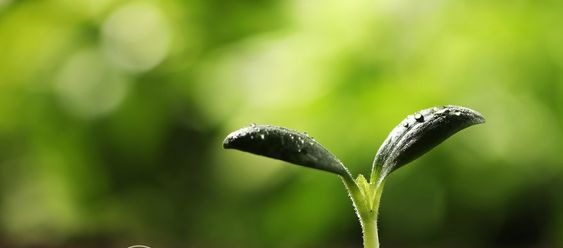
Watering
Sunflowers possess a certain level of drought tolerance; however, they thrive best when they receive regular watering. It is important to water younger plants around the roots to promote healthy growth. To determine when to water the plants, you can use your hands to feel the top few inches of soil. If it feels dry, it indicates that watering is required. Moreover, if sunflower heads start to droop, it is a sign that they are not receiving sufficient water. Established sunflower plants generally need watering approximately once a week, although the frequency may vary depending on the amount of rainfall in your region.

Temperature and Humidity
Sunflowers have the ability to tolerate a wide range of temperatures. When selecting a planting location, it is important to choose an area with adequate air circulation, while also ensuring that the tall stems are not excessively exposed to strong winds. These flowers thrive in moderately warm climates, and with regular care, they can withstand high levels of heat and humidity. It is crucial to wait until after the last frost has passed before planting sunflowers. The cold-hardiness of sunflowers can vary depending on their exposure to chilly temperatures during their growth and establishment stages.
Fertilizer
Sunflowers have a high demand for nutrients, so it is necessary to enrich the growing area with organic matter or compost to meet their heavy-feeding growth requirements. During the spring, it is recommended to use a slow-release fertilizer that contains nitrogen, phosphorus, and potassium. This fertilizer should be applied approximately eight inches deep in the soil. Sunflowers possess extensive root systems that can extract moisture from deep within the ground. It is important to avoid overfertilizing the plants or applying fertilizer near the base of the plant, as this can cause the flower heads to droop or even fall off.

Varieties of Sunflowers
Sunflowers come in a diverse range of sizes and colors. Let’s explore some popular sunflower species:
- ‘Mammoth’ (Helianthus giganteus): This classic sunflower is known for its impressive height, reaching over 12 feet. It is well-suited to drought conditions and has the ability to attract birds as pollinators.

‘Autumn Beauty’ (Helianthus annuus): This sunflower variety presents a stunning blend of orange, red, and yellow hues. It blooms during the late summer season and continues into the fall. The showy flowers are not only visually appealing but also rich in nectar, attracting butterflies and hummingbirds.

‘Teddy Bear’ (Helianthus annuus): This particular sunflower is an excellent choice for container gardens or as cut flowers. With a height ranging from two to three feet, it remains compact and manageable. ‘Teddy Bear’ sunflowers feature golden blossoms, adding a touch of warmth and charm to any arrangement.
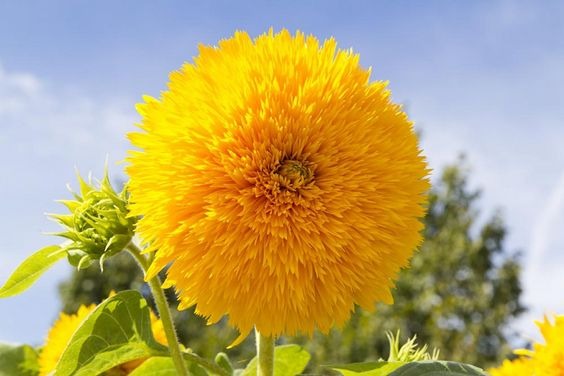
Pruning Guidelines
To maintain the health and appearance of sunflowers, pruning is necessary. Here are some recommendations for pruning sunflowers:
- Late Spring or Early Summer Pruning: In late spring or early summer, it is advised to prune sunflowers by cutting them back to approximately half their current size. This can be done using sharp clippers or snips. It is best to perform this task early in the morning when the weather is cooler, before it gets too hot.
- Summer Pruning: A second round of pruning is typically required in the summer, around June or July. During this time, it is recommended to cut back the sunflowers by about one-third of their size. This helps to maintain their shape and control their growth.
- Thinning Seedlings: Depending on the specific variety of sunflower, it may be necessary to thin out the seedlings. This ensures better blooming, as sunflowers do not thrive when overcrowded by weeds or other sunflowers. When growing sunflowers indoors, it is advisable to keep only the strongest seedling and remove the weaker ones.
- End of Growing Season: After the growing season, when the petals and foliage of annual sunflowers start to appear brown or dry, it is time to cut them to the ground. This ensures a tidy appearance and prepares the plant for the next growing cycle.
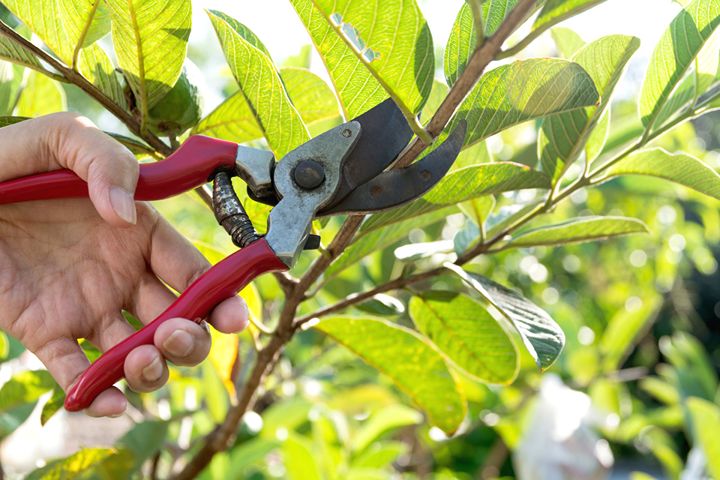
Propagation
While propagating sunflowers from cuttings can be more challenging compared to growing them from seeds, it is still possible to propagate certain varieties using this method. Here’s a step-by-step guide on how to propagate sunflowers from cuttings:
- Selection: Choose a stem that is approximately four to six inches long. Ensure that the stem has mature leaves but no flower buds. It is best to perform the selection in the morning during the spring season, using a sharp knife or pruning shears.
- Leaf Removal: Remove all but two or three leaves from the stem, exposing the nodes. This helps promote root development. Additionally, trim off the top half-inch of the stem.
- Optional Rooting Hormone: If desired, dip the cuttings into a rooting hormone. This can enhance the chances of successful root formation.
- Planting: Prepare a potting mixture using a combination of half sand and half peat moss. Plant the leafless section of the cutting into the potting mixture, ensuring it is securely positioned.
- Ideal Environment: Move the cuttings to a warm area that receives indirect sunlight. To maintain humidity levels, cover the entire planted cuttings with a protective cover, such as a plastic dome or a plastic bag. This helps to create a favorable environment for root development.
- Root Formation: After a period of approximately two to four weeks, roots should begin to emerge. To check for root development, gently tug on the cuttings and see if there is resistance. Once roots are present, the cuttings can be transplanted outdoors.
- Gradual Sun Exposure: Initially, expose the transplanted cuttings to more direct sunlight on a daily basis, gradually increasing the exposure. This helps the plant acclimate to full sun conditions.
Growing from Seed
To successfully grow sunflowers from seed, follow these step-by-step instructions:
- Timing: Once the final frost has passed, you can sow sunflower seeds directly into your garden during the spring. However, if you live in an area prone to unexpected cold snaps, it is advisable to start the seeds indoors. Begin the indoor process approximately three to four weeks prior to sowing the seeds directly in the garden.
- Seed Selection: You can purchase sunflower seeds from a garden center or harvest them from existing sunflower plants. Allow the sunflower heads to dry either on or off the stem until they turn brown and the foliage becomes yellow. The seeds should appear somewhat loose. Protect the drying flower from birds to prevent them from removing the seeds prematurely.
- Harvesting and Saving Seeds: When the sunflower heads are ready, cut the stem approximately six inches below the head. Place the sunflower heads flat in a container to catch any fallen or loose seeds. If the seeds remain attached, gently slide them away from the flower head using your hand or a tool. Rinse the seeds and place them on a paper towel or cloth to dry. Store the seeds in a cool, dry location until the following spring.
- Planting: Start by spacing the sunflower seeds approximately eight inches apart and planting them half an inch deep in the soil. The time between sowing and blooming can vary, typically ranging from 50 to 70 days, depending on the specific sunflower variety.
- Moisture and Care: Keep the soil consistently moist but avoid making it overly soggy until the sunflower plants have established and sprouted. Once they start growing, sunflowers typically bloom for about three weeks, adding a vibrant display to your garden.
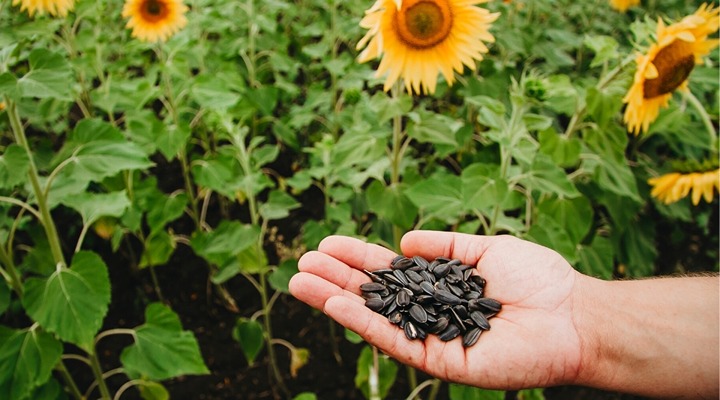
Overwintering
Since sunflowers are annual plants that complete their life cycle within a single year, they generally do not demand extensive winter care. Here are some details regarding overwintering sunflowers:
- Annual Nature: Sunflowers are considered annuals, meaning they complete their life cycle in one growing season. After flowering and producing seeds, the sunflower plants naturally die off. Consequently, if you want to have sunflowers in the following year, you will need to sow new seeds in the spring.
- Indoor Growth: If you choose to grow sunflowers indoors, some varieties may continue to grow during the winter. However, the blooms may be less pronounced due to reduced exposure to daily sunlight. It’s important to note that indoor sunflower growth might differ from outdoor growth in terms of size and vigor.
- Mulching: Unlike some perennial plants, sunflowers generally do not require specific mulching practices during winter. Mulching around the sunflower garden bed is not a mandatory step for winter care. However, if you prefer to apply mulch for other reasons, such as weed control or moisture retention, you can do so, but it is not specifically aimed at protecting sunflowers during the winter season.
Common Pests and Plant Diseases
Sunflowers, while attracting pollinators, can also be prone to pests and diseases. Here is detailed information regarding common pests and plant diseases that affect sunflowers:
Pests
Sunflowers can attract various pests, including birds, rodents, deer, and insects such as sunflower moths, beetles, caterpillars, weevils, and gray moths. To protect your sunflowers from animal damage, consider using protective barriers or netting. When it comes to pests, it is generally advisable to minimize the use of insecticides, as they can have harmful effects. Instead, try manually removing pests by hand. If significant damage occurs, such as noticeable holes from bite marks, consider using an insecticide spray as a last resort.

Diseases
Sunflowers can be susceptible to several diseases, including powdery mildew, rust, rot, and Verticillium wilt. These diseases often occur when sunflowers are overcrowded, lack proper air circulation, or are planted in soil with poor drainage. To prevent these diseases, ensure that your sunflowers have adequate spacing, good air circulation, and well-draining soil. If you notice the initial signs of any of these diseases, it is recommended to use a garden fungicide spray promptly to prevent their spread.

Common Issues
Sunflowers, despite being relatively easy to grow, can still encounter certain problems related to disease and environmental factors. Here is a detailed rephrasing of the information:
Black/Brown Leaves
Improper water management can lead to fungal wilting in sunflowers. This condition, caused by inadequate watering, results in dark brown spots on the leaves and stem. If the wilting and spots stop spreading after adjusting the water supply for a few days, it is likely due to underwatering. However, if the problem persists, it may indicate compromised soil in the growing area, requiring the relocation of the plants to a new spot.
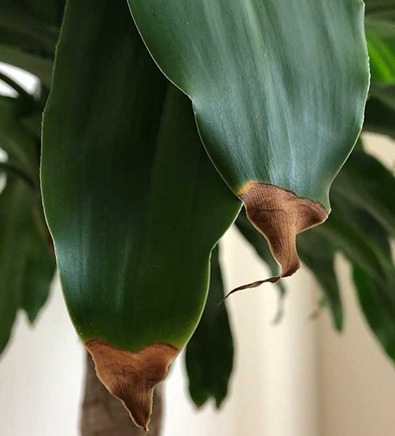
Yellow Leaves
Overwatering can cause the foliage of sunflowers to turn yellow. Sunflowers do not thrive in excessively wet conditions, so it is important to plant them in well-draining areas. Watering should only be done when the top few inches of soil are dry, taking into account any rainfall received. Additionally, an improper balance of nutrients in the soil can also contribute to yellowing leaves. To address this, consider adding a nitrogen-based fertilizer or enriching the soil with organic compost as mulch.




